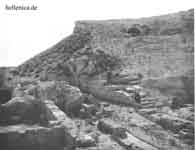.
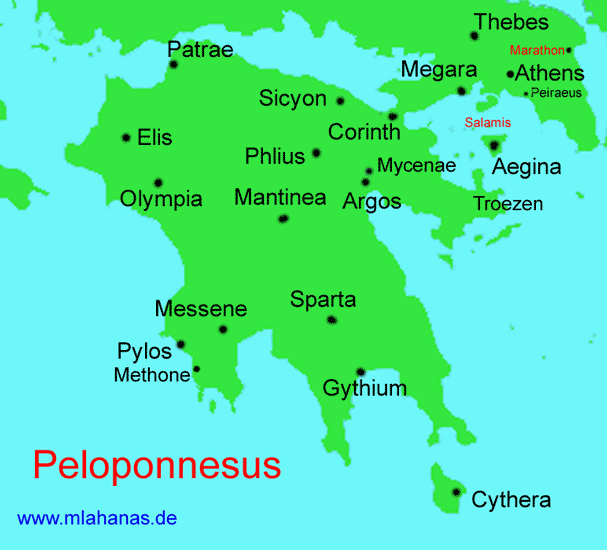
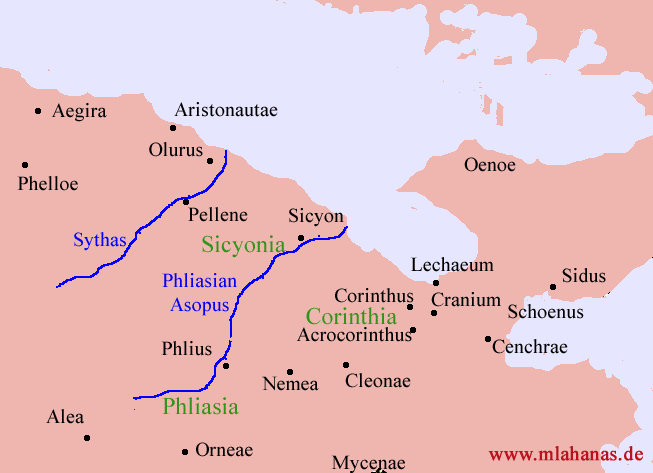
Sikyon (Greek: Σικυών; gen.: Σικυῶνος) was an ancient Greek city situated in the northern Peloponnesus between Corinth and Achaea on the territory of the present-day prefecture of Corinthia. The king-list given by Pausanias[1] comprises twenty-four kings, beginning with the autochthonous Aegialeus; the penultimate king of the list, Agamemnon, compels the submission of Sicyon to Mycenae; after him comes the Dorian usurper Phalces. Pausanias shares his source with Castor of Rhodes, who used the king-list in compiling tables of history; the common source was convincingly identified by F. Jacoby[2] as a lost Sicyonica by the late fourth-century poet Menaechmus of Sicyon.

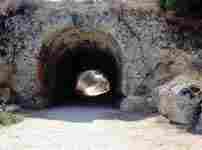

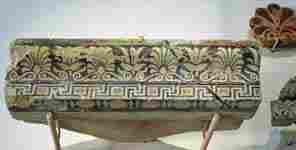

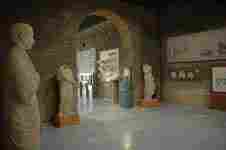
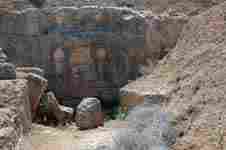

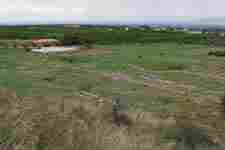
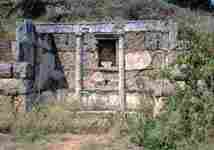
10,
Sicyon was built on a low triangular plateau about two miles from the Corinthian Gulf. Between the city and its port lay a fertile plain with olive groves and orchards. After the Dorian invasion the community was divided into the ordinary three Dorian tribes and an equally privileged tribe of Ionians, besides which a class of serfs lived on and worked the land.
For some centuries, Sicyon remained subject to Argos, whence its Dorian conquerors had come; as late as 500 BC, it acknowledged a certain suzerainty. However, its virtual independence was established in the 7th century BC, when a line of tyrants arose and initiated an anti-Dorian policy. Chief of these rulers was the founder's grandson Cleisthenes, the uncle of the Athenian legislator Cleisthenes. Besides reforming the city's constitution to the advantage of the Ionians and replacing Dorian cults with the worship of Dionysus, Cleisthenes gained renown as the chief instigator and general of the First Sacred War (590 BC) in the interests of the Delphians.
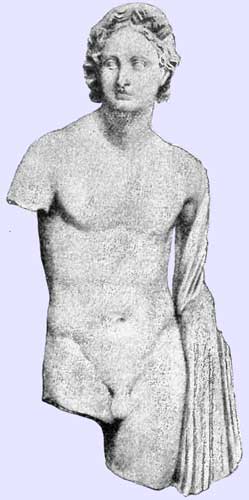
About this time, Sicyon developed the various industries for which it was noted in antiquity. As the abode of the sculptors Dipoenus and Scyllis it gained pre-eminence in woodcarving and bronze work such as is still to be seen in the archaic metal facings found at Olympia. Its pottery, which resembled Corinthian ware, was exported with the latter as far as Etruria. In Sicyon also the art of painting was supposed to have been invented. After the fall of the tyrants their institutions survived till the end of the 6th century BC, when Dorian supremacy was re-established, perhaps by the agency of Sparta under the ephor Chilon, and the city was enrolled in the Peloponnesian League. Henceforth, its policy was usually determined either by Sparta or Corinth.
O: chimera walking; ΣI below R: dove flying; pellet above
silver hemidrachm struck in Sicyon 360-330 BC
In the 5th century BC Sicyon, like Corinth, suffered from the commercial rivalry of Athens in the western seas, and was repeatedly harassed by squadrons of Athenian ships. In the Peloponnesian War Sicyon followed the lead of Sparta and Corinth. When these two powers quarrelled after the peace of Nicias it remained loyal to the Spartans. Again in the Corinthian war, Sicyon sided with Sparta and became its base of operations against the allied troops round Corinth. In 369 it was captured and garrisoned by the Thebans in their successful attack on the Peloponnesian League. During this period Sicyon reached its zenith as a centre of art: its school of painting gained fame under Eupompus and attracted the great masters Pamphilus and Apelles as students; its sculpture was raised to a level hardly surpassed in Greece by Lysippus and his pupils.
The destruction of Corinth (146) brought Sicyon an acquisition of territory and the presidency over the Isthmian games; yet in Cicero's time it had fallen deep into debt. Under the Roman empire it was quite obscured by the restored cities of Corinth and Patrae; in Pausanias' age (A.D. 150) it was almost desolate. In Byzantine times it became a bishop's seat, and to judge by its later name Hellas it served as a refuge for the Greeks from the Slavonic immigrants of the 8th century.
The village of Vasiliko (described by the 1911 Encyclopædia Britannica as "insignificant") now occupies the site.
Notable people
Aegialeus (21st century BC) legendary founder[3]
Butades (7th century BC) sculptor
Canachus (6th century BC) sculptor
Aristocles (5th century BC) sculptor
Praxilla (5th century BC) poetess
Eupompus (4th century BC) painter
Melanthius (4th century BC) painter
Pausias (4th century BC) painter
Eutychides (4th century BC) sculptor
Lysippos (4th century BC) sculptor
Lysistratus (4th century BC) sculptor
Xenokrates (3rd century BC) sculptor
Sostrates (4th century BC) pankratiast; thrice Olympic champion
Aratos of Sicyon (3rd century BC) Head of Achaean League
References
^ Pausanias 2.5.6-6.7.
^ F. Jacoby on Castor in Die Fragmente der griechischen Historiker 250 F 2, noted with approval by Robertson 1999:65 and note 36.
^ As displayed on the Wallchart of World History, Sicyon was founded in 2081 BC by Aegialus
This article incorporates text from a publication now in the public domain: Chisholm, Hugh, ed (1911). Encyclopædia Britannica (11th ed.). Cambridge University Press.
External links
"Sicyon: The most ancient Greek city-state", Ellen Papakyriakou/Anagnostou. Contains a great deal of information on ancient and present-day Sicyon.
"The Greco-Roman Theatre at Sicyon", The Ancient Theatre Archive. Theatre specifications and tour of the ancient theatre.
| Ancient Greece
Science, Technology , Medicine , Warfare, , Biographies , Life , Cities/Places/Maps , Arts , Literature , Philosophy ,Olympics, Mythology , History , Images Medieval Greece / Byzantine Empire Science, Technology, Arts, , Warfare , Literature, Biographies, Icons, History Modern Greece Cities, Islands, Regions, Fauna/Flora ,Biographies , History , Warfare, Science/Technology, Literature, Music , Arts , Film/Actors , Sport , Fashion --- |
Retrieved from "http://en.wikipedia.org/"
All text is available under the terms of the GNU Free Documentation License


